Planning a trip to Japan is a once-in-a-lifetime opportunity to explore one of the most fascinating and unique destinations in the world. My husband and I have had the pleasure of visiting Japan multiple times and each time, we fell in love with it all over again. We are now grateful to be living in Japan, and we couldn’t be any happier.
As you might have seen on our site, we help others organise their perfect Japan trip by organising self-guided tours. We’re already helped a thousand first time visitors to Japan, so we really know all the tips and tricks to have a wonderful time.
The perfect trip to Japan needs to be fairly all rounded, which means you will want to ensure that you get to see the main highlights, you experience the ultramodern and the super traditional, eat various Japanese foods, try some street food and get enough souvenirs to remember this wonderful trip.
From my experience, the best time to start planning is around 6 months in advance, but we’ve had clients with much less time and it was still brilliant. I will explain why timing is important and when it’s good to start as early as possible. I will share everything that I learnt to make sure your planning turns into a super smooth holiday to Japan.
When to start planning
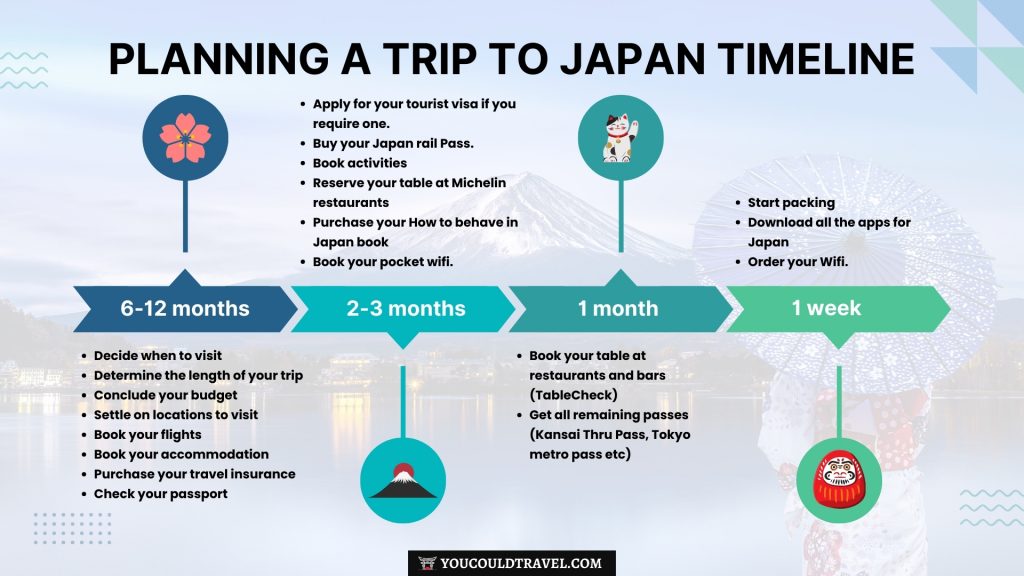
I put together a timeline for your Japan trip to make it easier to understand when to start and why. My experience is that you should start planning at least 6 months in advance. This will give you enough time to book great rates for flights and hotels.
The general rule of thumb for Japan is that the earlier you book, the cheaper your accommodation prices.
When to visit
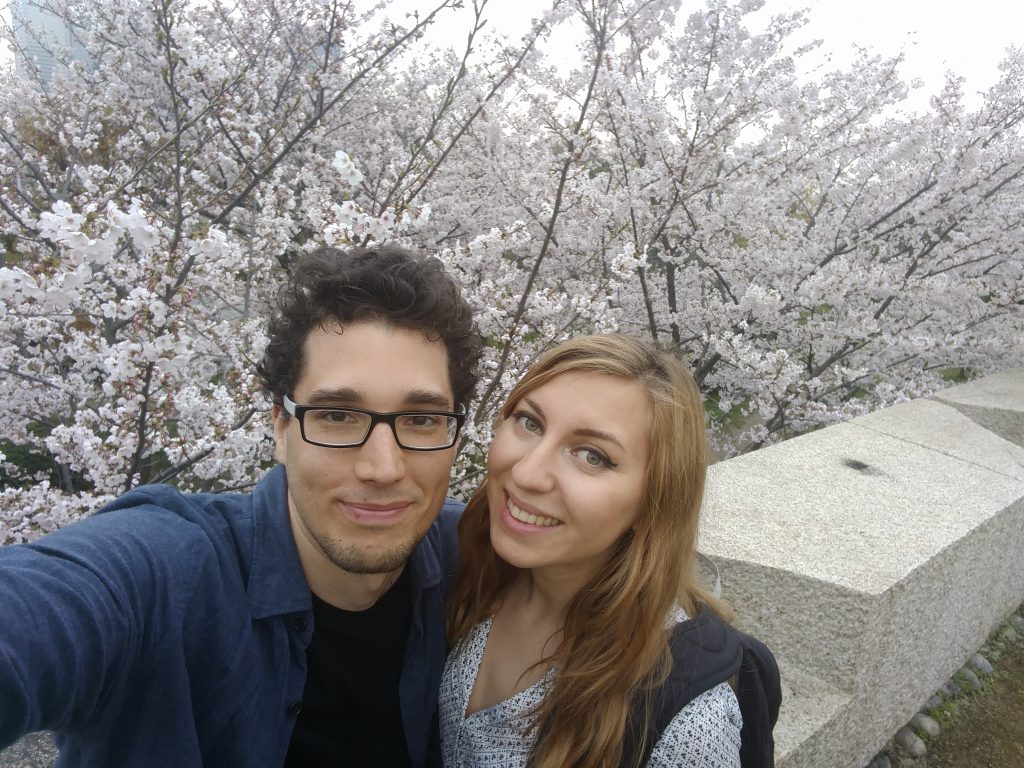
The great news is that Japan is an all year round destination with four distinctive seasons. This means that you can visit at any time of the year and each season will have something unique and beautiful to offer.
The most popular times to visit (and the most expensive) Spring and Autumn. Summer and Winter are considered shoulder seasons when prices are much lower.
Spring (March – May) – Spring in Japan is by far the most popular time to visit, and also the most expensive. Well priced accommodation usually books up at least 6 months in advance.
Summer (June – August) – Summers in Japan are often hot and humid. This is the rainy season in Japan, which often times can bring typhoons. Summers in Japan are cheaper to visit. It’s a beautiful season full of flowers and green nature, but you do need to be fine dealing with intense heat.
Autumn (September – November) – Autumns are mild with long sunny days and cooler evenings. It’s a beautiful time to visit, especially if you time your arrival for the kōyō (viewing of colourful foliage) which has been a tradition in Japan for centuries. An autumn highlight in Japan are the ginkgo trees that turn their leaves into a vibrant yellow. Tokyo is an excellent place to appreciate the ginkgo trees in the autumn.
Winters (December – February) – Winters are cold, and it usually snows, especially in mountainous areas and in Hokkaido. Temperatures are milder in cities like Tokyo or southern islands like Kyushu or Okinawa. Winter is the most affordable time to visit the country, with fewer tourists and the best price deals.
The climbing season for Mount Fuji is from early July to early September.
Outside Sakura season, Japan will be packed during national holidays: Christmas and New Year (Dec 22 – Jan 4), during Golden Week (April 29 – May 5), and during the Obon Festival, in mid-August.
How long to visit
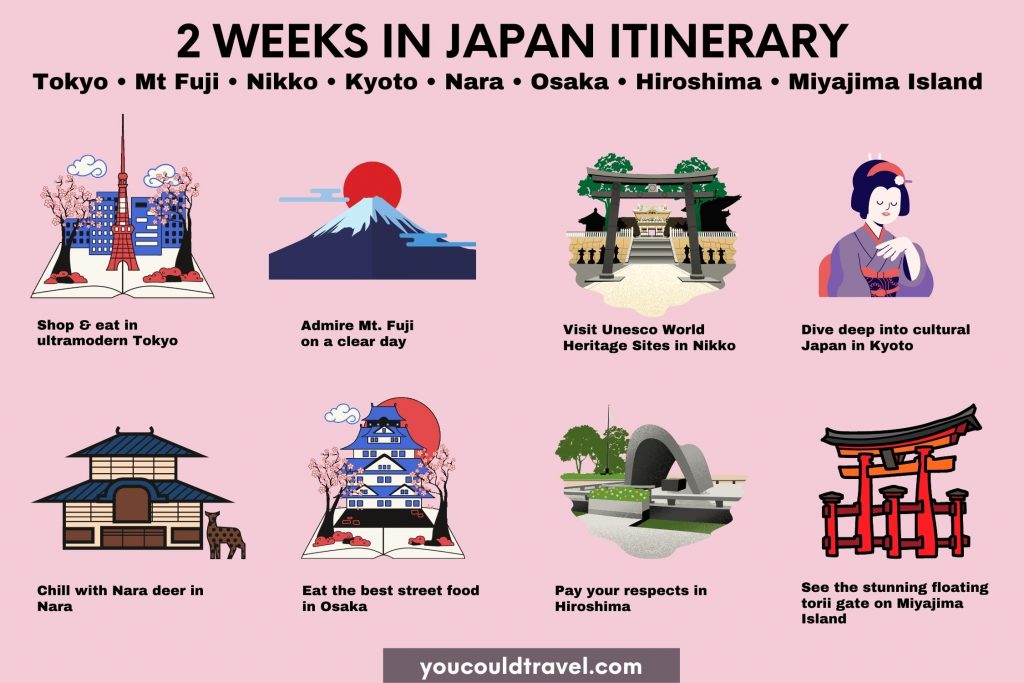
If it’s your first visit to Japan, a two-week trip is perfect. This allows you to explore major cities like Tokyo, Kyoto, Osaka, along with day excursions to places like Hakone, Nikko, Kamakura and Nara. You’ll have the chance to enjoy top attractions, engage in fantastic activities, savour both traditional and modern Japanese cuisine, and experience travelling on the high-speed shinkansen trains. Along the way, you’ll discover a blend of UNESCO World Heritage sites and breathtaking Japanese gardens.
Some people go for an initial 7 days in Japan to see if they like the country. In such a short period of time you can only see Tokyo and Kyoto really, maybe with a day trip to Nara. These visitors almost always end up taking another, longer trip to Japan.
For your ease, I put together a resource with all my Japan itineraries.
Trip to Japan cost
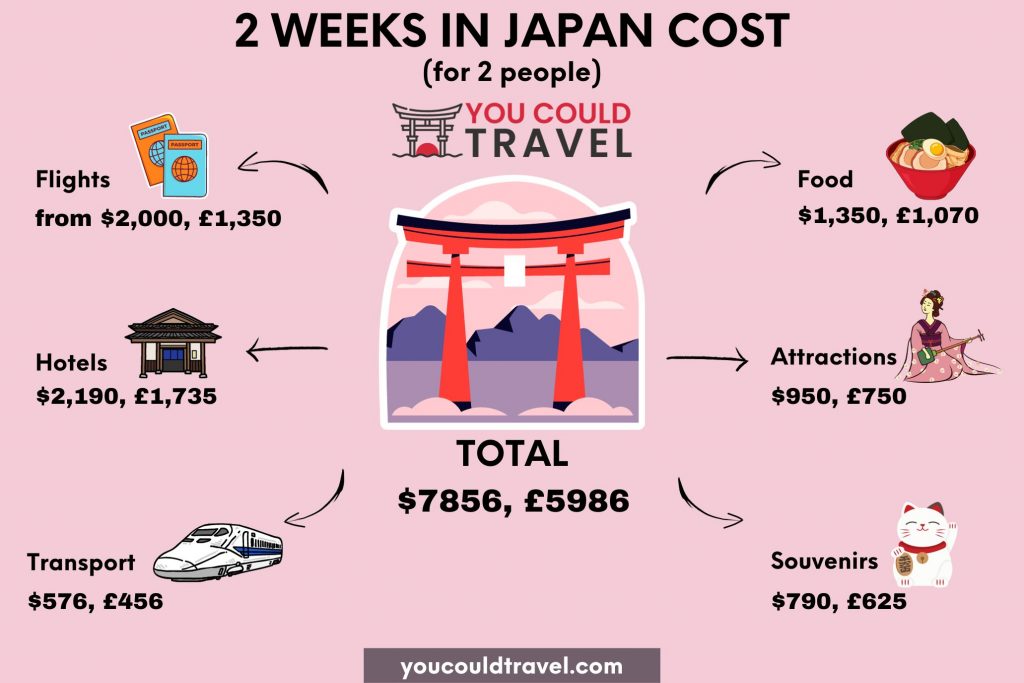
Based on the tours people book on our site, the estimated total cost for 2 weeks in Japan is $5,530, £4,400 for 2 people.
This works out to around $200, £157 per person per day, and it includes flights, accommodation, transportation, food, activities, souvenirs, and other small expenses.
This is a for a medium-budget holiday with some a kaiseki dinner, top attractions and occasional splurges on indulgent souvenirs.
Of course, every trip is personal, and you can choose to enjoy Japan on a stricter budget or splurge on luxury accommodation. We put together a comprehensive budget guide to give you a good idea of how much does a trip to Japan cost.
Where to visit
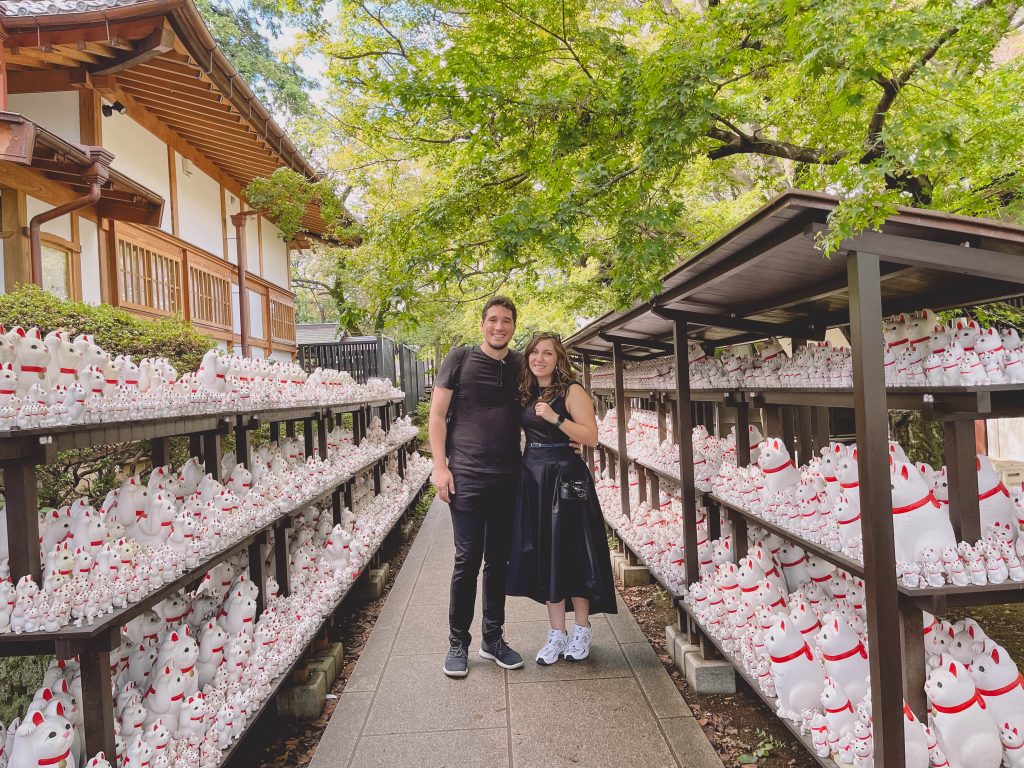
You will want to see as many places as possible during your visit, but without feeling rushed or compromising on the quality of your holiday. I have complete guides for many of the most popular Japanese cities.
We recommend staying in Tokyo, Kyoto, and Hiroshima and taking day trips from there.
Tokyo – Tokyo is the ultra-modern capital of Japan and my favourite place in the world, so I’m a little biased here. But in all fairness, everyone who visits finds themselves madly in love with Tokyo too. Tokyo is great for at least 5 days to be able to see the main neon-lit districts (Shibuya, Shinjuku) but also the more traditional areas (Ueno, Asakusa). From Tokyo, you can take many day trips to Hakone, Kamakura and Nikko.
Kyoto – Kyoto is the traditional heart of Japan and ideal to see shrines and temples, beautiful gardens and eat kaiseki dinners. You’ll want to partake in a tea ceremony, dress in a kimono and see the authentic and well-preserved side of the country. Stay for at least 5 nights and take day trips to Nara and Osaka.
Hiroshima – Hiroshima is well known for its WWII tragedies; hence it’s a more historical place to visit. I recommend 2 nights here, with one day exploring the nearby magnificent Miyajima island.
Other places to consider: Nagoya to take a day trip to the Nakasendo trail and explore its most beautiful part (Magome – Tsumago). Kanazawa is an incredible city with well-preserved samurai districts, tea houses and traditional food. For a more extensive trip, consider adding Okinawa or Hokkaido to your itinerary.
6-12 months in advance
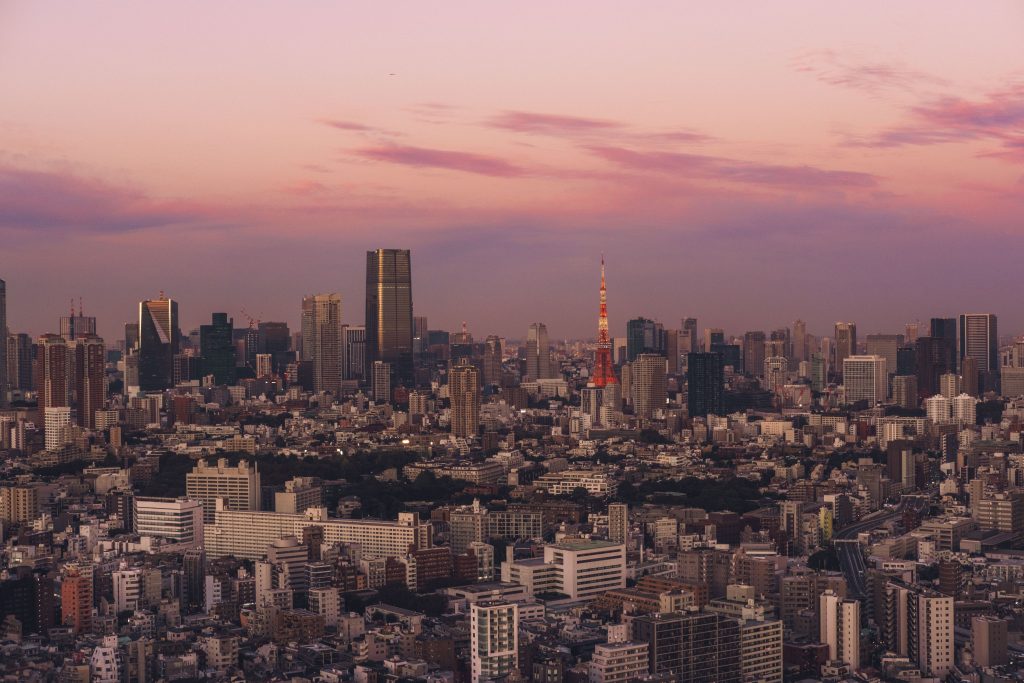
Book your flights as early as possible to ensure you get a good deal. Ideally, you will want to reserve your preferred seat, too. It’s rare to find a last-minute deal for flights to Japan during popular times, but you might score cheap flights in the winter and summer, which are the shoulder season.
Book your accommodation to get preferential prices and discounts. I highly recommend that you book your accommodation at least 6 months in advance if you intend to visit Japan during the Sakura season or national holidays. The earlier you book, the cheaper the prices, really! Check all my accommodation guides for Japan.
Purchase your travel insurance, so you’re covered for any cancellations and curtailments. Our go-to travel insurance is Insure My Trip.
Check your passport and apply for a renewal if needed. Remember that it can take up to 10 weeks to receive your new passport.
3 months in advance
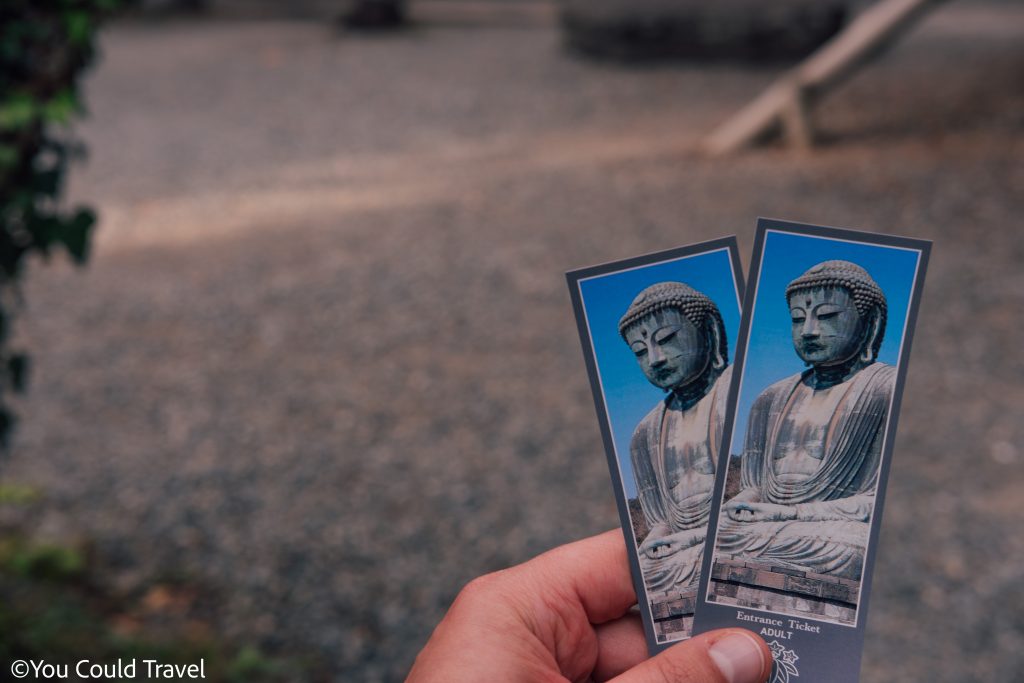
Apply for your tourist visa if you require one. Citizens of 68 countries don’t require a visa for stays up to 90 days. There are currently no restrictions to visiting Japan.
Buy your Japan rail Pass. Your JR Pass enables you to enjoy unlimited train travel on JR lines around Japan. The Shinkansen (bullet train) which is run by Japan Rail, is also included. This is very useful if you plan extensive trips around the country.
2 months in advance
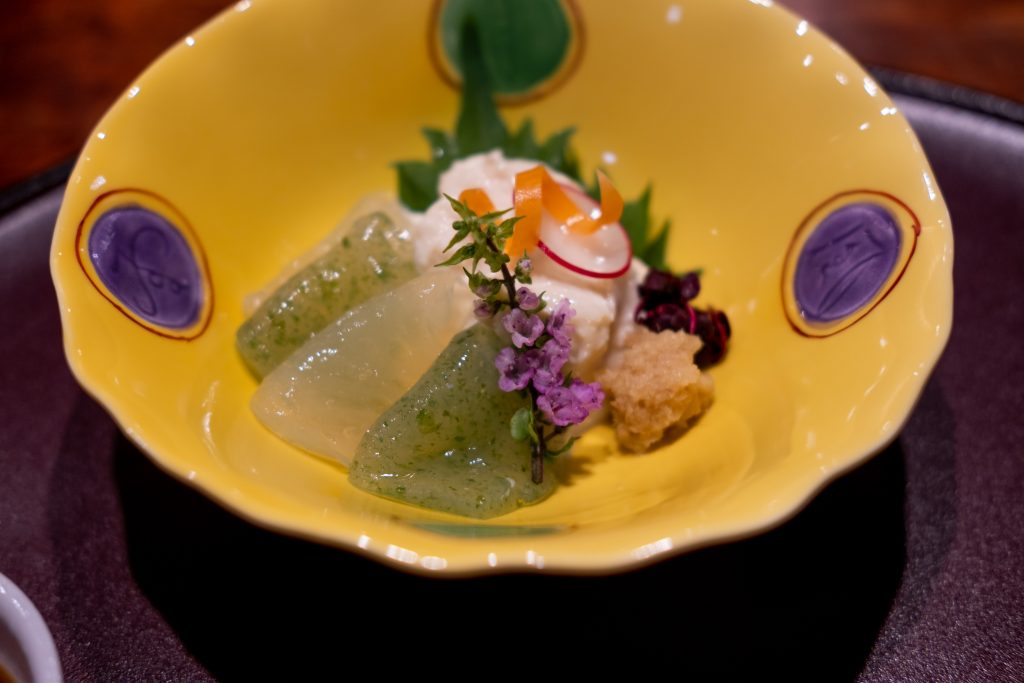
Book activities. Many popular Japan experiences sell out closer to the dates, so make sure to book your entry tickets to popular places such as teamLab Planets, Shibuya Sky, Universal Studios and Disneyland. We recommend using Klook or Viator.
Reserve your table at Michelin restaurants. Use services like omakase to find dining experiences and book your table. Please note that omakase does charge a fee for using their service.
Purchase your How to behave in Japan book to familiarize yourself with the etiquette and manners in Japan. I created this book to make it fun to learn about Japan. Besides, it’s packed with manga style drawings to make it even easier to immerse yourself in Japanese culture.
Book your pocket wifi. You will want to use your internet in Japan, and having a pocket Wi-Fi is the best way to go. It’s much cheaper than your roaming costs and will enable you to stay connected and use maps when you’re on the go.
1 month in advance
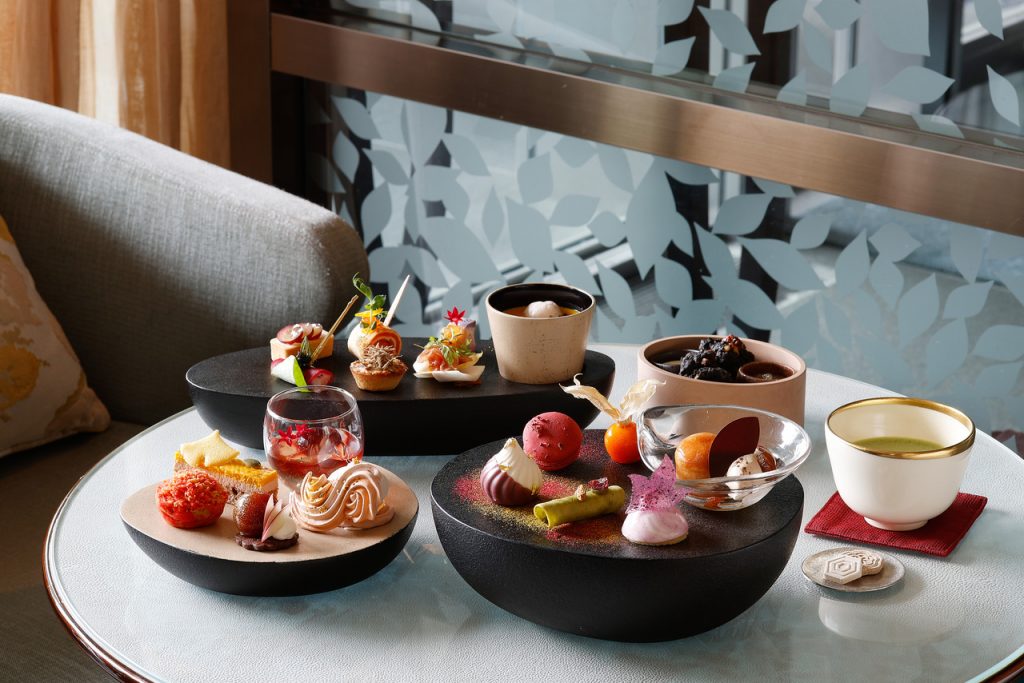
Book your table at restaurants and bars. It’s wise to book your restaurant and bar tables in advance, as most establishments in Japan accept reservations only up to a month ahead. I suggest using TableCheck, a user-friendly platform that’s free to sign up for and use. This is especially important for sought-after spots like SG Club, high tea venues in Tokyo, and the Sakurai tea experience, all of which can only be booked 30 days in advance.
Get all remaining passes. You will want to order your Tokyo metro passes, any Odakyu passes (for Kamakura or Hakone) and Kansai Thru passes. These have been created to save you time and money. I recommend using Klook for this.
1 week in advance
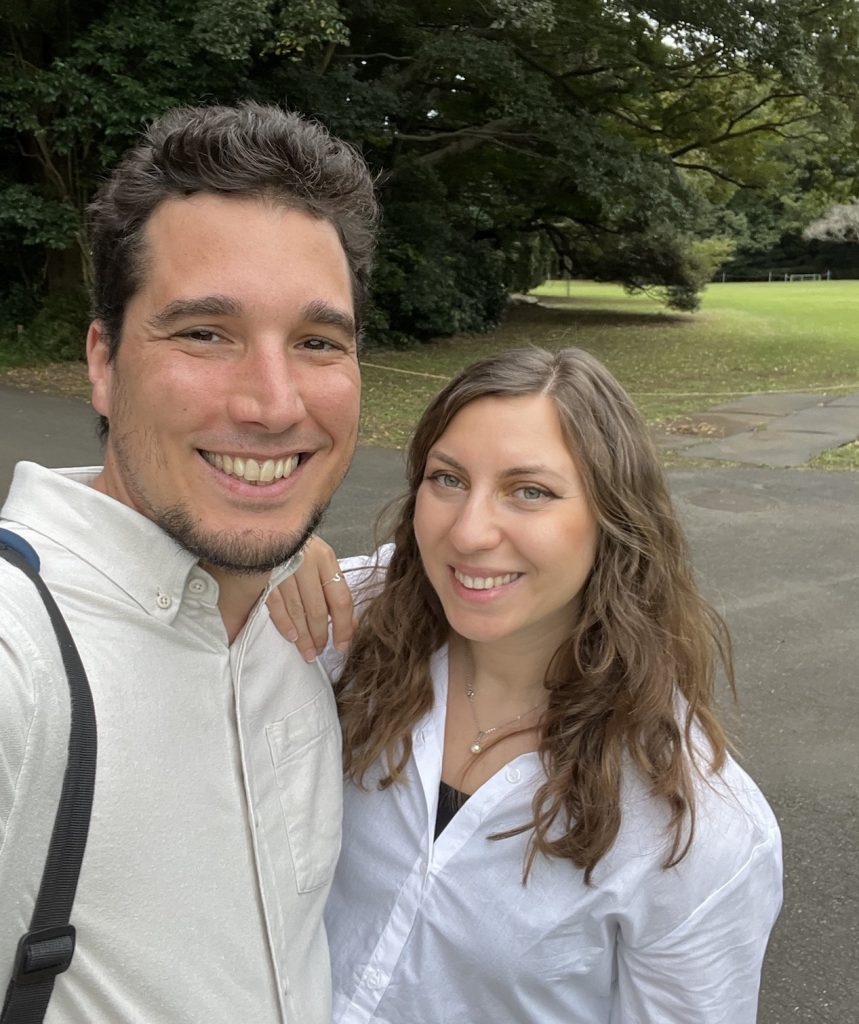
Start packing. Start checking the weather. Almost all weather apps will give you an idea of the temperatures to expect for your upcoming trip. Check our guide on what to wear in Japan and ensure you have everything for your upcoming trip. I recommend our what to pack for Japan guide, to help you figure out if there is anything specific you still need for your trip.
Download all the apps for Japan. I put together a list of all apps you will need for a smooth trip, which include maps (Google maps), a translator (Google translate) and an emergency app (Safety Tips) that notifies you of any natural disasters.
Order your Wifi. The best and easiest way to stay connected in Japan is by purchasing a pocket Wi-Fi device. There are many companies which sell them for very affordable prices. I use Klook for all my clients. You will get a small device delivered to your accommodation, and you can simply connect your phones and laptops to it as you would to a normal router. They all come with unlimited internet, but their battery can sometimes drain before the end of the day. Grab a battery pack with you to ensure you never run out of power.
Tips for your visit
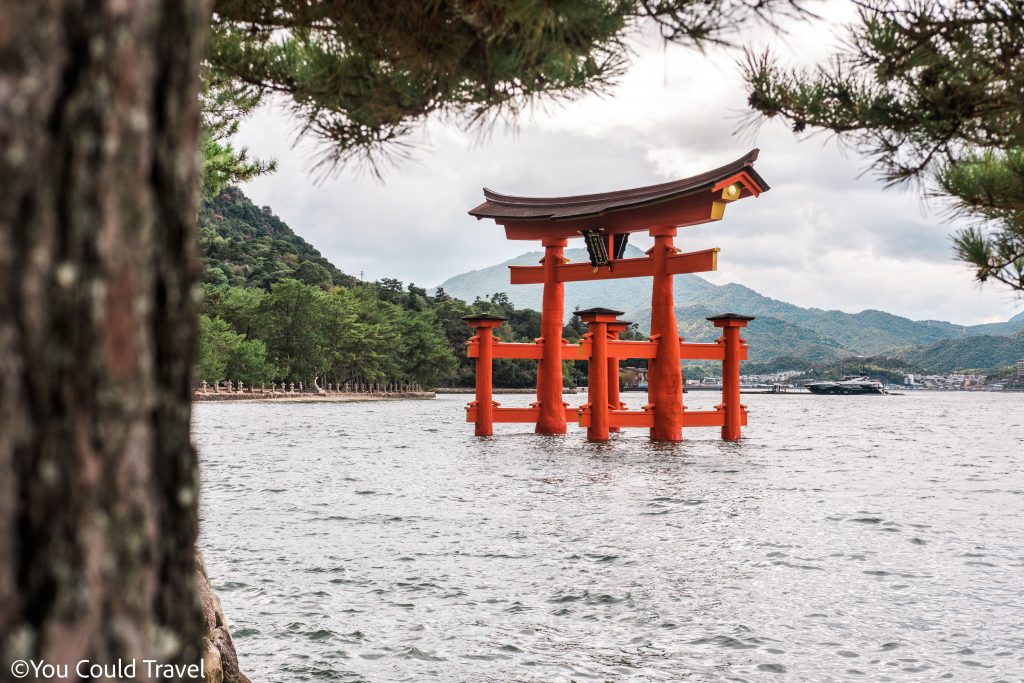
Check your ryokan – No trip to Japan is complete without staying in a ryokan, a traditional Japanese inn. Some ryokans are small, while others are hotel-like larger establishments. Make sure to check if your ryokan has a private bathroom, as most of them have shared toilets. If your ryokan offers traditional rooms with tatami, book those as they are a lot more authentic. Try the oldest hotel in the world called The Nishiyama Onsen Keiunkan. We stayed there and loved our experience.
Onsen and tattoos – Japan is not big on tattoos and if you have them, consider booking a private onsen option. When entering an onsen, you will need to be completely naked (don’t worry, it’s normal in Japan). Almost all onsen are separated by gender. Make sure you respect the rules of how to onsen properly.
Cheap snacks at konbini – Head to a 7/11, FamilyMart or Lawson to purchase many Japanese snacks for very affordable prices. It’s common to find ready made food and drinks here too so if you’re traveling on a budget, then konbini will be your best friend.
Learn a few Japanese phrases – Contrary to common belief, Japanese people don’t speak much English. Many of the younger Japanese can understand English but don’t feel confident in speaking it. It’s appreciated when you learn a few essential phrases.
You don’t need to rent a car – Japan has sound public transport which is fast, reliable, and clean. Not to mention, they are always on time. We recommend making good use of your Japan Rail passes to take as many bullet trains between your Japanese destinations. The only time I recommend renting a car is if you plan on visiting a very remote village or if you’re in Hokkaido or Okinawa.
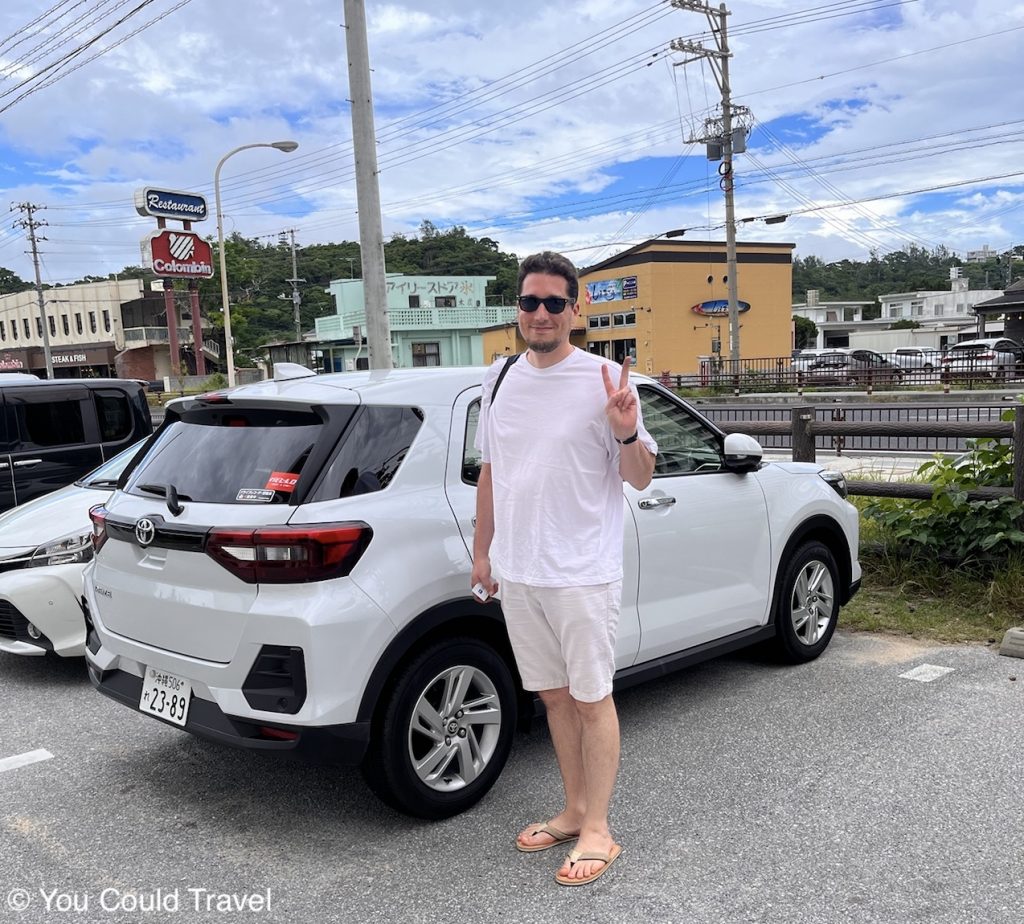
Bring cash with you – Make sure to carry sufficient cash, as many places in Japan, surprisingly, do not accept credit cards. Although hotels and certain restaurants might take cards, having cash on hand is essential. Especially in less touristy areas, smaller eateries and shops often only accept cash.
Be respectful. Familiarize yourself with the manners and etiquette in Japan. As mentioned, I highly recommend our book How to Behave in Japan. I live in Japan and learnt about the local customs.
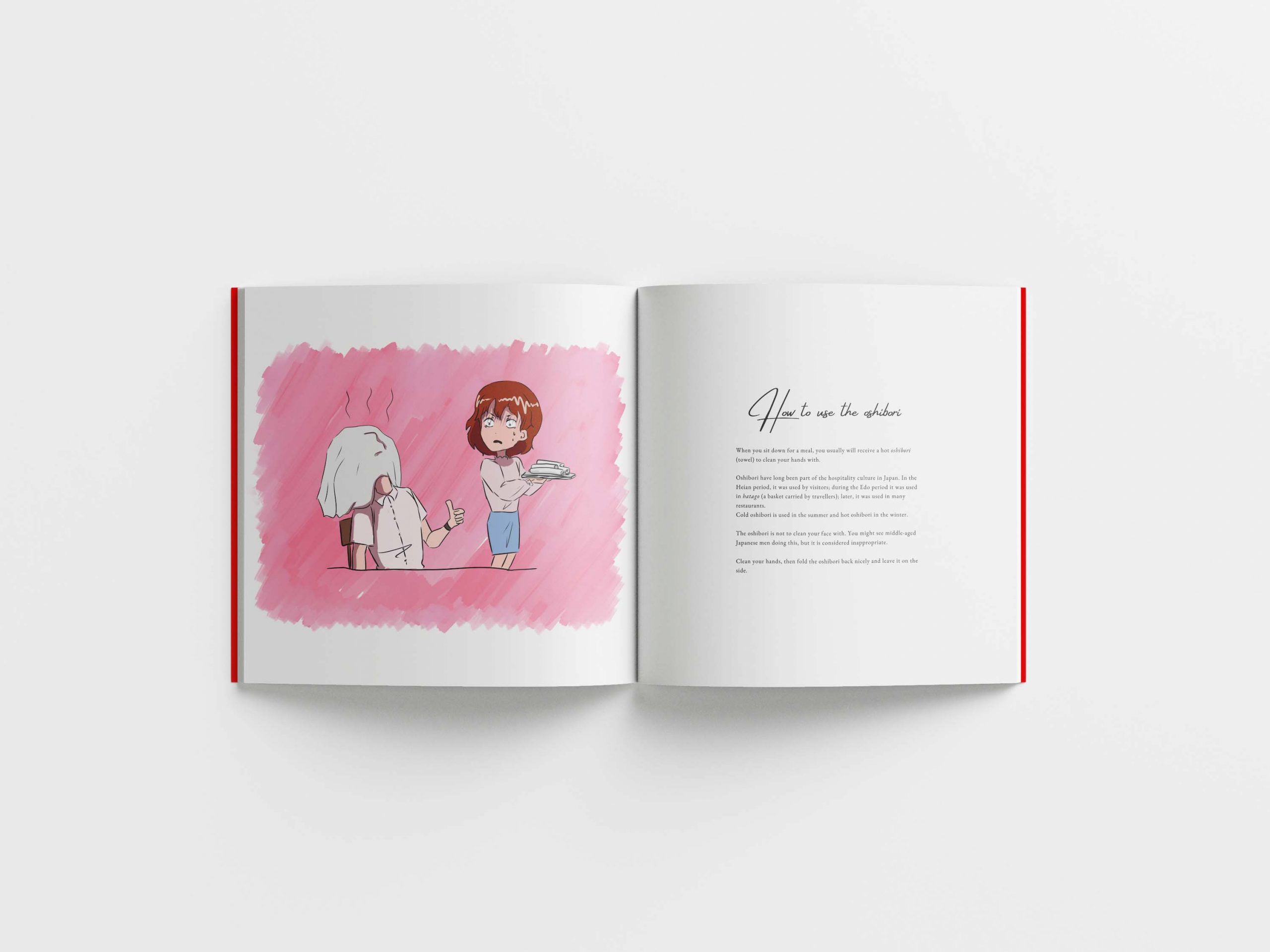
Learn the restaurant etiquette. It’s a good idea to learn how to use an oshibori and how to use your chopsticks. Don’t worry, it’s a lot of fun practising some restaurant etiquette in Japan and locals will really appreciate your efforts.
Don’t dress improper – People wear neutral colours and very few stand out. Dress well and smart and try to blend in. Remember that wearing tracksuit bottoms or leggings outside the gym is considered lazy and in poor taste.
Don’t tip -There is no need to tip in Japan, as the country doesn’t have a tipping culture. Service is included in your bill.
Frequently Asked Questions
How do I organise a trip to Japan?
Start at least 6 months in advance by booking your flights.
Create an itinerary, then book your accommodation.
Ensure your passport is up to date.
About 3 months in advance, book your JR Pass
About 2 months in advance book any tours and experiences you wish to enjoy in Japan.
How much does it cost to travel to Japan?
The average total cost for 2 weeks in Japan is $5450 (£4530, ¥715,000) for 2 people. This works out to ¥28,300 ($195) per person per day, and it includes flights, accommodation, transportation, food, activities, souvenirs, and other small expenses.
What is the best month to go to Japan?
The best month to visit Japan is November or April. November is ideal for peak autumn colours, and April is the peak for Sakura season.
Where should I go first time to Japan?
On your first trip to Japan, you should go to Tokyo and Kyoto. Depending on the length of your trip, you can add day trips to Osaka, Nara, Nikko, and Mount Fuji.
How many days is enough to see Japan?
The ideal time to visit Japan for a first timer is 2 weeks. This allows you enough time to visit Tokyo and Kyoto and also take a few day trips to see other main attractions.

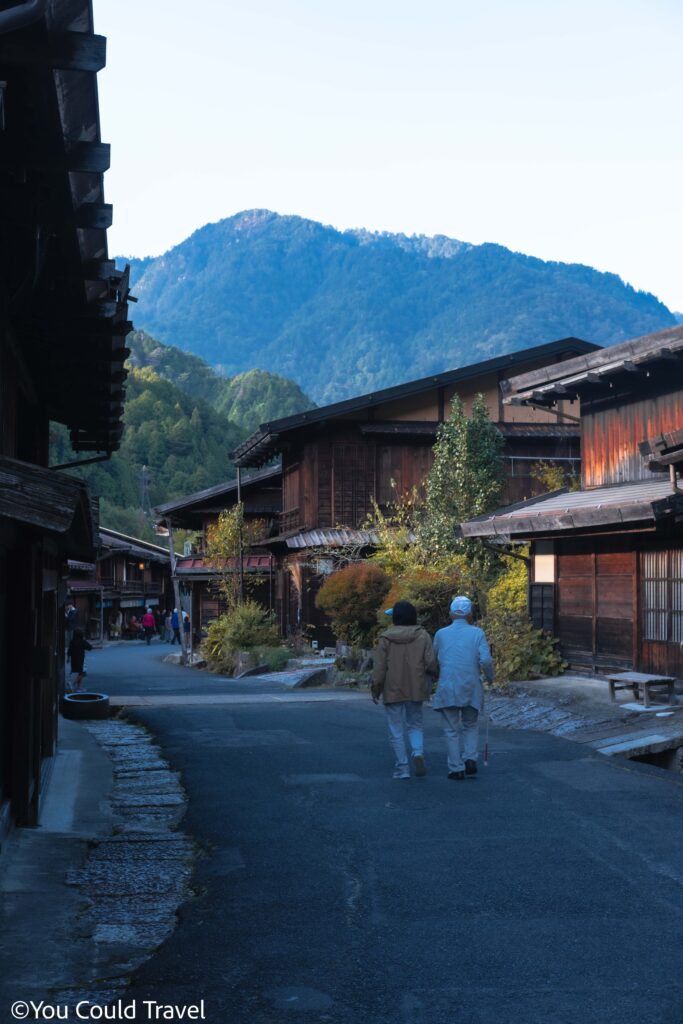

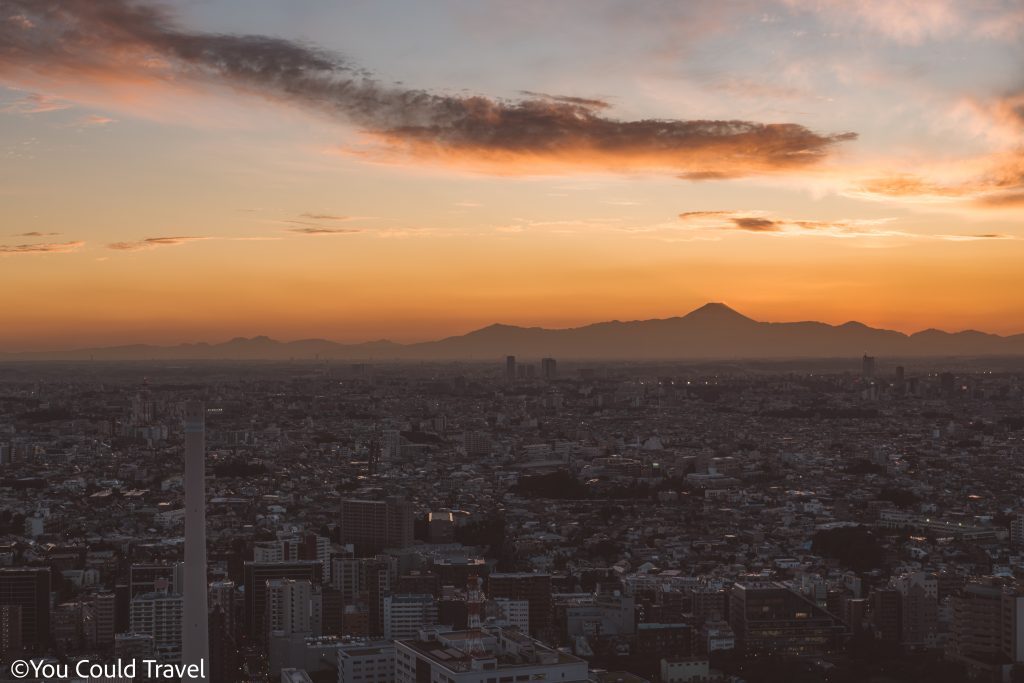
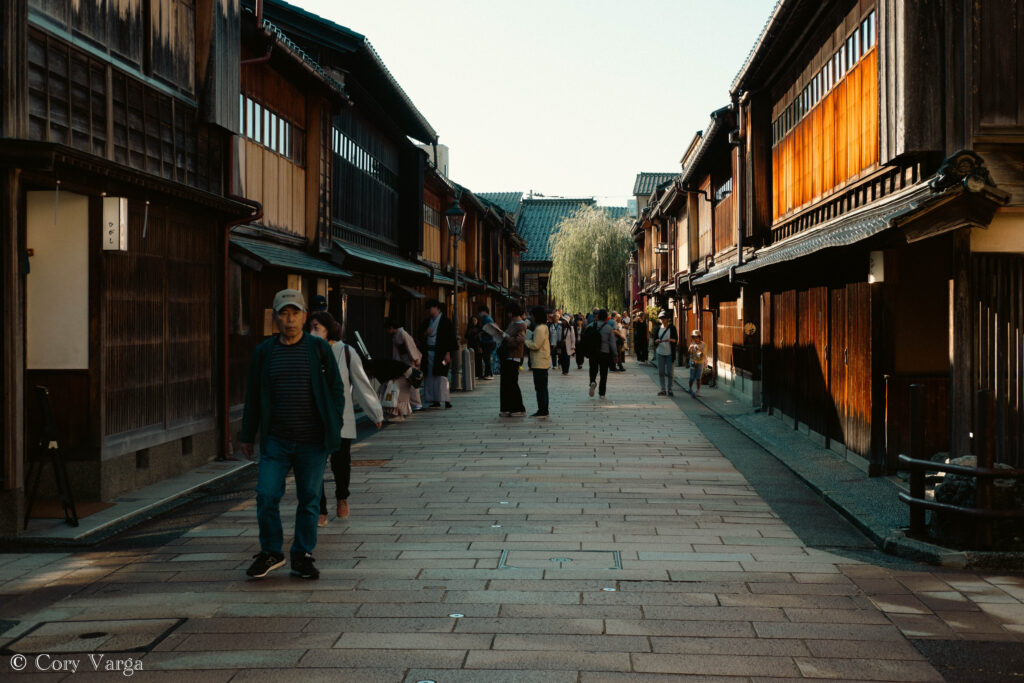
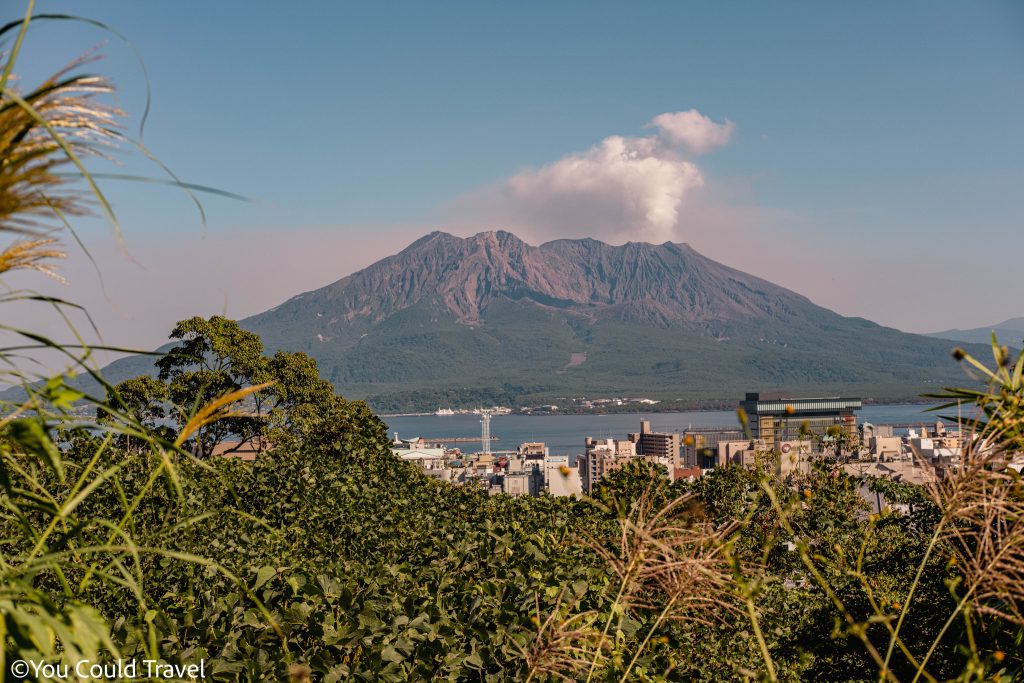
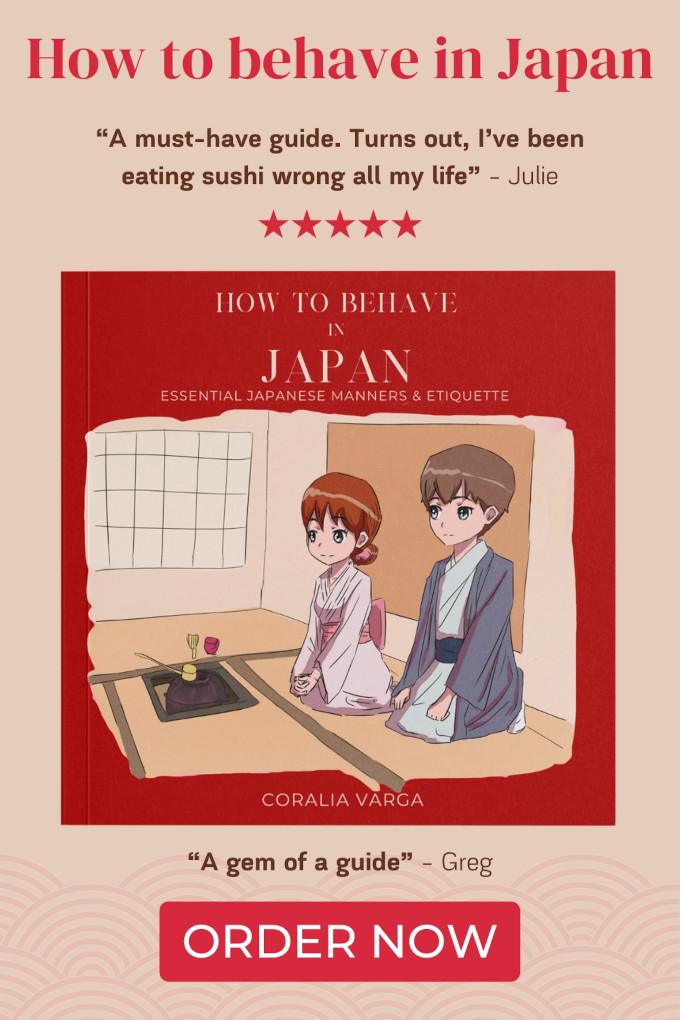

Leave a Reply